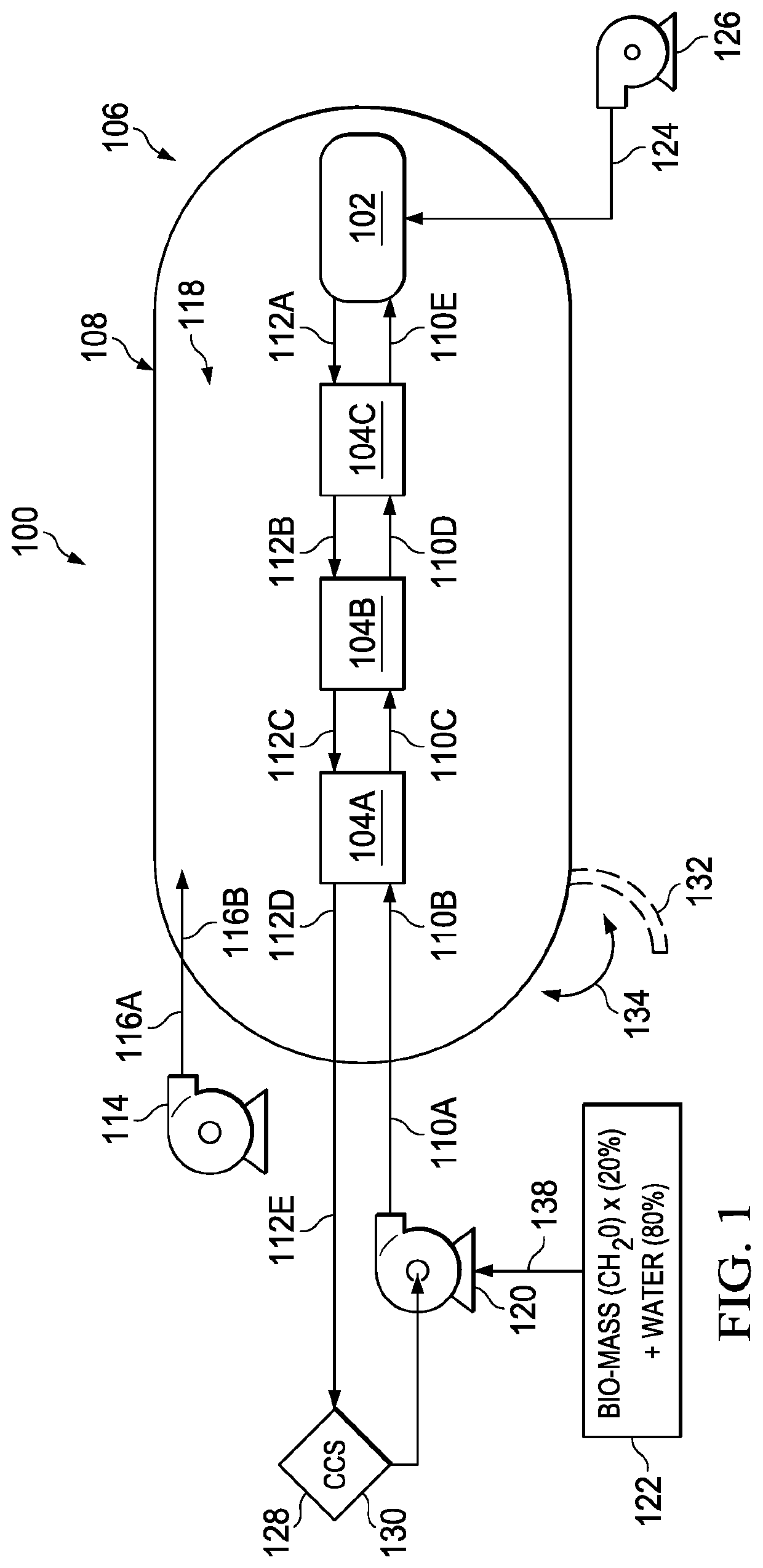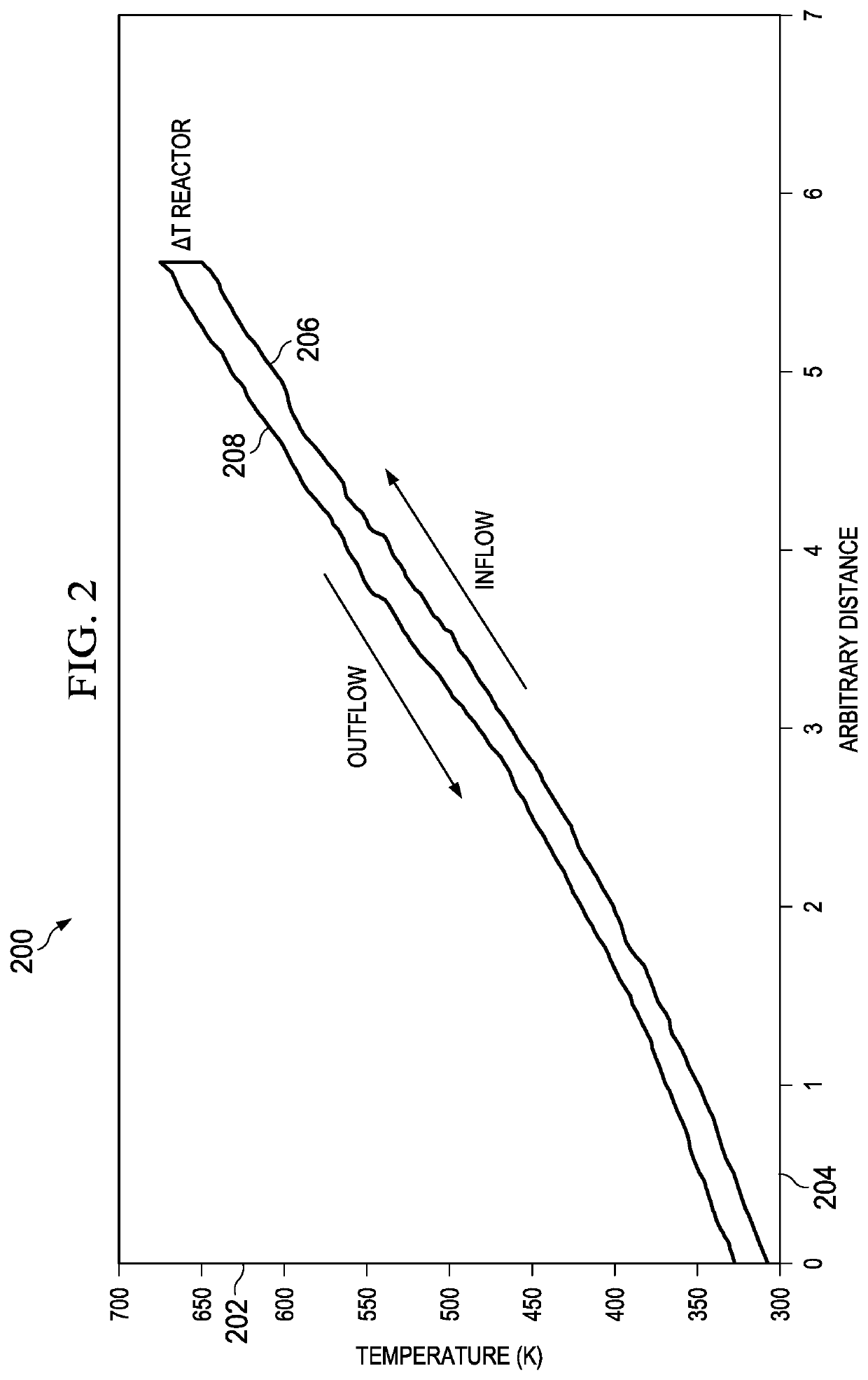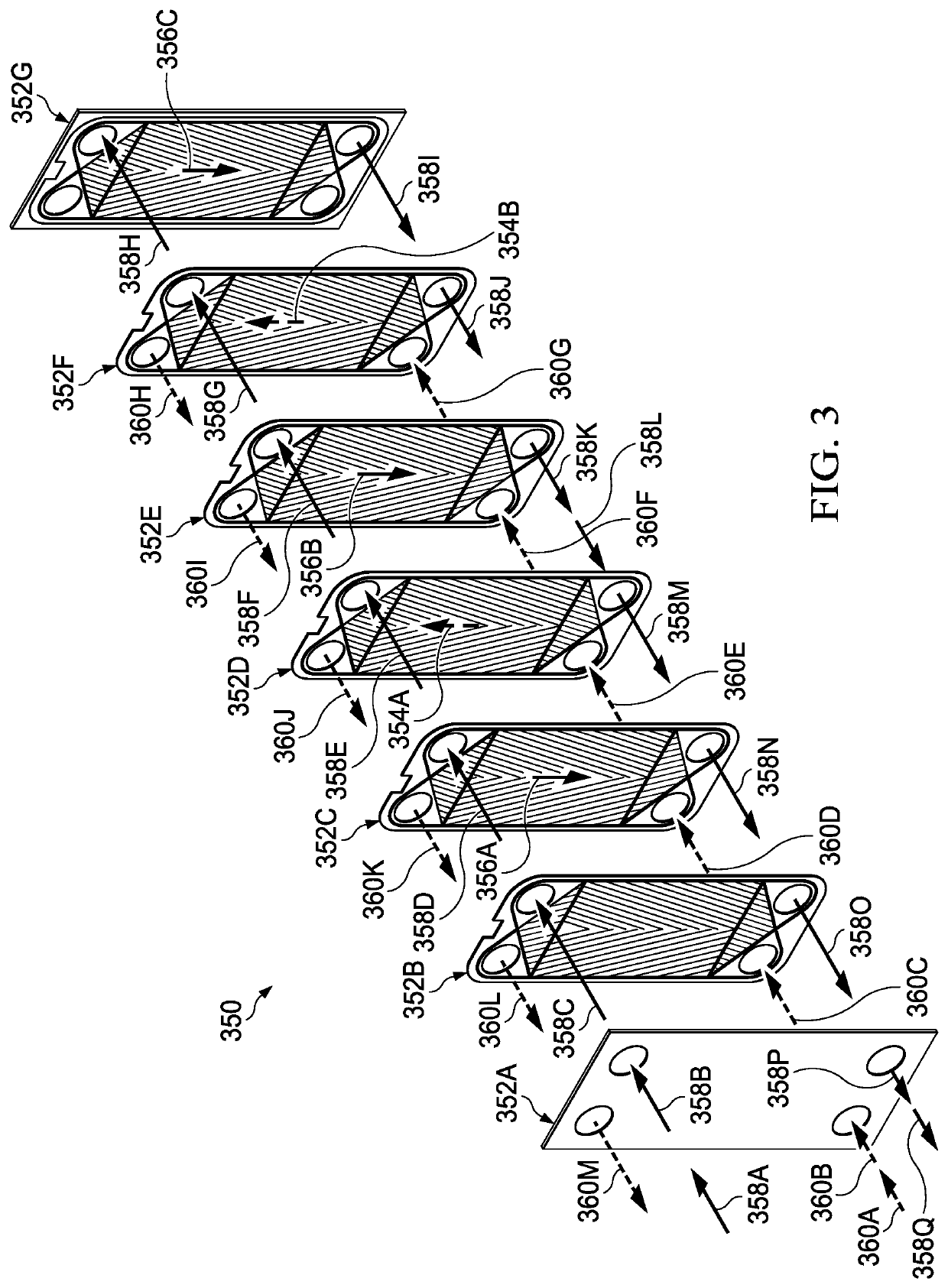Supercritical water gasification with decoupled pressure and heat transfer modules
a technology of heat transfer module and supercritical water, which is applied in the direction of gasification process details, bulk chemical production, petroleum industry, etc., can solve the problems of unresolved problems, unsatisfactory use or generation of biomass fuel, and unresolved problems, so as to improve the efficiency of the present scwg system, less expensive, and less expensive
- Summary
- Abstract
- Description
- Claims
- Application Information
AI Technical Summary
Benefits of technology
Problems solved by technology
Method used
Image
Examples
Embodiment Construction
[0044]As described herein, the present invention discloses a system and method for supercritical water gasification (SCWG) of biomass material. The present invention includes a SCWG reactor and heat exchangers located within a shared pressurized vessel, which means the function of containing high pressure is decoupled from the high temperature function. Put another way, the present invention allows the heat transfer function to be conducted independently from the pressure transfer. By decoupling these functions, the present apparatuses and methods achieves efficiencies and cost effectiveness over known SCWG systems, which allows the present invention to support commercial scaled-up SCWG operations.
[0045]Containing the heat from the hot fluid from the reactor in heat exchangers within the high pressure vessel allows heat to be transferred to the incoming cool liquid that is headed toward the reactor. This allows much of the heat from the reactor to be recycled, which increases effici...
PUM
| Property | Measurement | Unit |
|---|---|---|
| pressure | aaaaa | aaaaa |
| pressure | aaaaa | aaaaa |
| critical point | aaaaa | aaaaa |
Abstract
Description
Claims
Application Information
 Login to View More
Login to View More - R&D
- Intellectual Property
- Life Sciences
- Materials
- Tech Scout
- Unparalleled Data Quality
- Higher Quality Content
- 60% Fewer Hallucinations
Browse by: Latest US Patents, China's latest patents, Technical Efficacy Thesaurus, Application Domain, Technology Topic, Popular Technical Reports.
© 2025 PatSnap. All rights reserved.Legal|Privacy policy|Modern Slavery Act Transparency Statement|Sitemap|About US| Contact US: help@patsnap.com



